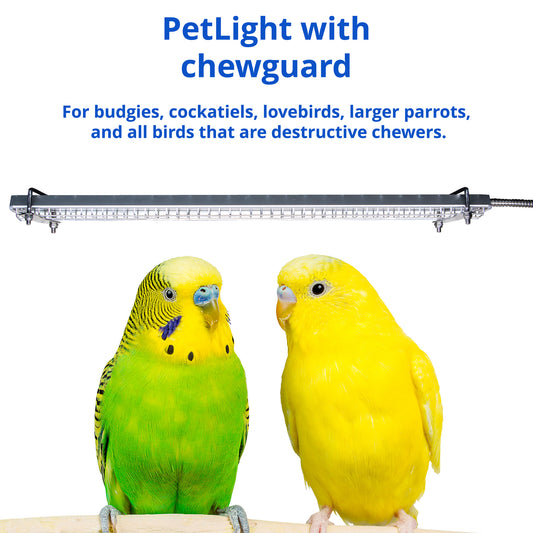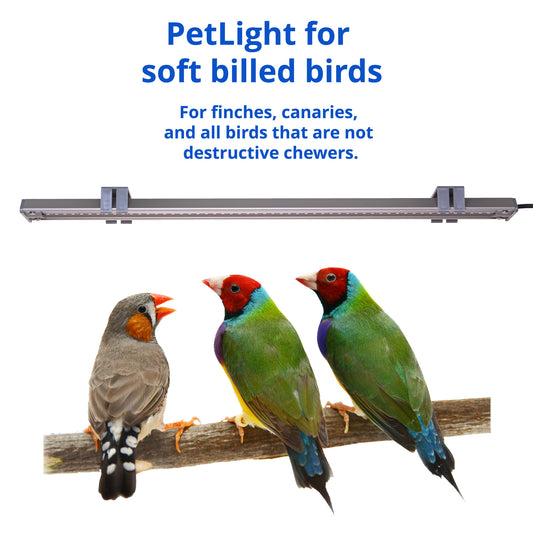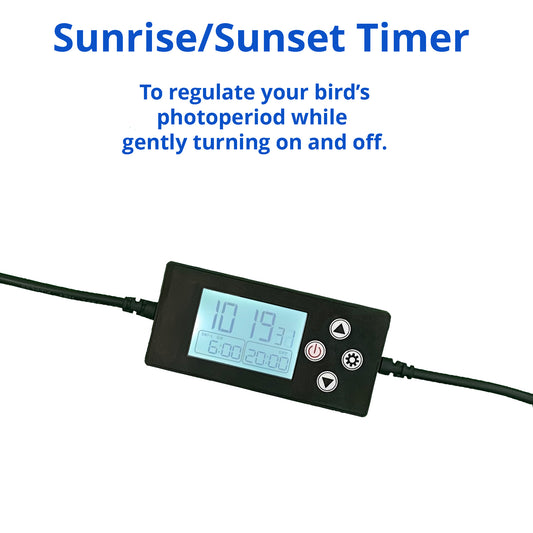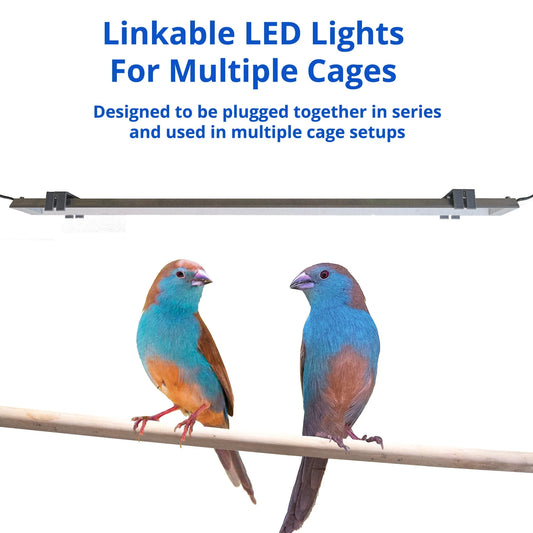Why Cage Placement Affects Lighting More Than You Think
Share

When setting up your bird’s cage, it’s easy to focus on toys, perches, or nearby activity. But there’s one factor that’s often overlooked — light exposure.
Where you place your cage affects how much usable light your bird actually receives each day.
And when lighting is off — too dim, uneven, or inconsistent — it can subtly affect your bird’s behavior and daily rhythm.
Let’s look at how cage placement impacts lighting, and how to adjust your setup to better reflect what birds are naturally tuned to.
Why Light Placement Matters for Birds
In the wild, birds are exposed to overhead sunlight for the majority of their day. That constant, evenly distributed light allows them to:
Structure their daily rhythm
Identify safe times to rest and forage
Move freely through their environment without light-based hesitation
Indoors, however, birds often live in shaded corners or far from windows — meaning light cues are missing or unclear.
The result? Parts of the cage stay in shadow all day, or the bird receives less light than its instincts expect.
Common Placement Mistakes
Here are some typical lighting problems caused by poor cage placement:
| Mistake | What It Causes |
|---|---|
| Cage in a corner or against a dark wall | Shadows, dim light throughout the day |
| Cage placed too far from a light source | No direct light inside the cage |
| Cage facing a window with little sun | Bright room ≠ bright cage interior |
| Light placed above but too high | Light doesn’t reach down into the cage |
Even in a bright room, the cage interior may remain underlit, especially behind bars or below perches.
How to Improve Cage Lighting with Placement
To ensure your bird receives consistent, visible light where it actually lives:
Place the cage near a natural light source (but not in direct sunlight that could overheat)
Avoid corners — walls absorb and block light more than you think
Keep cage open on at least two sides, allowing light to flow in
Use a dedicated bird light, mounted directly above or on the cage
A cage-mounted fixture ensures even lighting throughout the interior, mimicking the overhead exposure birds expect.
Why Overhead, Cage-Mounted Lights Work Best
General room lights tend to bounce around the space, casting shadows and losing strength before they reach the cage.
That’s why HappyBird lights mount directly to the cage, lighting it from within.
It’s not just about making things brighter — it’s about putting the light where the bird lives, with:
Broad-spectrum visible light (no UVB)
24VDC low-voltage cables (safe even if chewed)
Flicker-free output birds are comfortable with
Consistent 10–12 hour daily routine support
Final Thoughts
Birds don’t see light the way we do — and a well-lit room doesn’t always equal a well-lit cage.
Placement is everything.
By positioning your bird’s cage thoughtfully, and using purpose-built lighting that shines into their world — not around it — you give your bird the clarity, structure, and consistency they instinctively seek.




